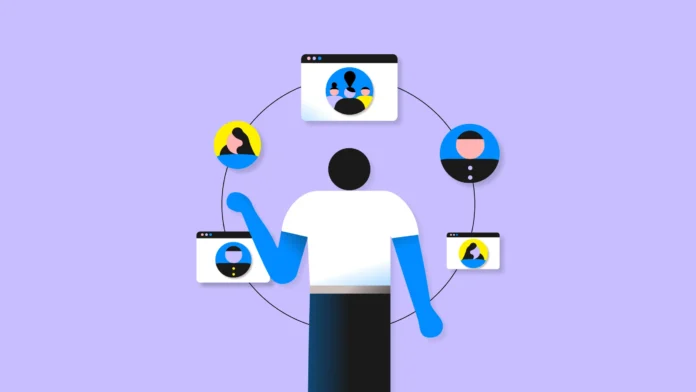
You can’t grow a business without a steady stream of customers. When you’re looking to boost revenue, your customer base reigns supreme. They’re without a doubt the most crucial factor in your growth-oriented initiatives.
If your customer base is dwindling, you’ll face an uphill battle in achieving your company’s goals. And clients who stop doing business with your company soon after their initial purchases don’t add much. You want to capture your audience and keep them satisfied. Customer-centric strategies can put your company’s growth on the upward path you’d like it to be. Let’s discuss some ways to get it done.
1. Align Online Content With Your Ideal Customer

Nearly every business shapes its marketing strategy around its ideal customer. You’ve probably heard the term “buyer persona” thrown around a time or two. While each client you deal with is unique, a buyer persona can represent the customer you’re targeting. It’s a snapshot of the characteristics people most likely to buy your products and services may share. Average education levels, annual salaries, and lifestyle aspirations are examples.
But when it comes to the online content your company creates, it’s all about search intent. What is your ideal customer searching for, and what do they do with the information once they’ve found it? If you don’t have a customer-centric online content strategy, you won’t align it with your ideal customer’s search intent. Essentially, all your efforts (and content) will be invisible.
According to Relevance, a growth marketing agency, an SEO strategy is imperative for companies that hope to scale. It can be the cure for an online visibility problem. To do so, you must analyze and create your content from your customer’s point of view. This process includes ensuring your website’s performance and nurturing the strength of your online community. To increase visibility, you must establish credibility and build authority with your ideal customer.
Start by finding out what information your audience is searching for. Where are they hanging out online, and who are they listening to? What type of digital experiences engage them? With this information, you can craft content and partner with other thought leaders to gain high-quality traffic. Keep track of your progress so you can re-optimize content as the landscape and your ideal customer’s preferences change.
2. Invest in Your Employees
Your employees’ experiences have a direct impact on the customer experience. If you’re understaffed, workers won’t keep up with clients’ demands. No matter how hard your employees try, they’re being asked to accomplish an impossible feat. Requests will fall through the cracks, and stress will overtake workers’ capacity to think through tasks.
Stretching employees too thin isn’t the only factor that’s detrimental to engagement. But it can cause staff to shut down and disconnect from the company’s mission. Your employees are no longer invested in the business’s future. This disconnect can translate into delivering subpar customer service, even if it’s unintentional.
Engaged employees, on the other hand, tend to help bring new customers in. A Gallup survey discovered organizations with engaged workers outperformed competitors by 147%. It’s an impressive figure, and it shows how investing in employees can be customer-centric.
Some companies like Costco accomplish this by providing above-average industry pay and staffing stores at appropriate levels. Others emphasize continuous learning environments, extending professional training opportunities staff members can take advantage of. But even more basic gestures, such as regular check-ins and sincerely listening to and implementing employee feedback, make a difference. By setting workers up for success, you can increase both client acquisition and retention.
3. Share Front-End Knowledge

Those on the back end of your company’s processes don’t often interact with your customers. As a result, they’re removed from most client feedback. Yet that’s feedback they may find useful in their roles.
Employees on the front end bear the brunt of customer complaints about your products, services, and processes. However, client support staff often have little influence on important factors that shape the customer experience. They might be able to listen and empathize, but they can’t offer solutions they’re not responsible for designing. It makes front-end staff’s jobs difficult when they’re not empowered to address the source of customers’ dissatisfaction.
Creating ways for the front end to share customer feedback with the back end changes this dynamic. Customer concerns and insights make it back to those with control over what may be driving clients away. Everyone from product engineers to accountants can see where they can make improvements.
Gaining exposure to front-end knowledge may also help inspire breakthroughs on persistent challenges. People tend to get stuck in their lines of thinking, and sometimes an outside perspective is the “Eureka!” moment they need. In addition, back-end employees learn what doesn’t make sense to the customer. A feature or procedure may click for the person who designed it, but this doesn’t mean it’s the best approach from the customer’s perspective. Gaining new insights from their customer-facing colleagues can help shape improvements to fuel growth.
4. Simplify Your Processes
When customers have to jump through a bunch of hoops to accomplish something, it doesn’t create the best impression. Think about a job applicant who has to upload a resume and fill out the same information on a subsequent form. Then they’re directed to submit samples of their past work, take several online tests, and complete a video interview. They haven’t even spoken to a hiring manager yet, and they’re already exhausted.
Perhaps they’re a little confused, too. Why go through all these steps if they can’t get a face-to-face conversation? Some applicants will rightfully throw in the towel after seeing the duplication and complexity. Your customers feel the same way if they can’t get support where they need it. You don’t want them to repeat their story as they get bounced around your site and phone tree.
Being customer-centric means making it easy for clients to access the information they need and get speedy resolutions. Don’t make them work for it by redirecting them to a contact form if they reach out on social media. Ensure you have the staff, tools, and processes to address client support needs in the channels they’re using.
You can also look for ways to add value and personalization to your processes. Solving the initial request may not be enough. Can you provide suggestions to prevent the problem from recurring or recommend offerings that might address their needs better? In addition, there might be client data you can leverage to make the customer feel valued and heard. Simple, efficient, and personalized processes tend to promote long-term growth since customers are more likely to stay.

Achieving Customer-Centric Growth
You may already be practicing customer-centric strategies. But if you’re not seeing the growth numbers you’d like to achieve, your approaches could be misaligned with your audience. Discovering what may be driving a less-than-enthusiastic response and making the needed adjustments will help you achieve true customer centricity. It’s not what you think — but rather what your audience does — that determines whether your business will stall or scale.
















